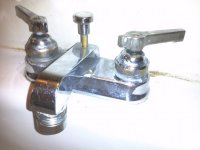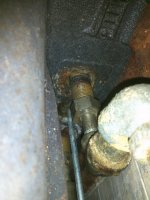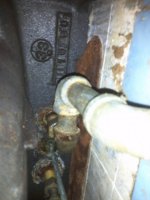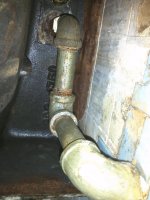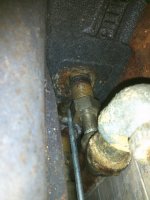Mnalep
Member
I have a very old faucet that has water dripping under the bathroom sink. The drip is on the threaded brass tailpiece that extends out the bottom of the sink where the cold water supply line hook up to.
I was wondering if the leak could be cause by an o-ring on the faucets stem? (If I can just fix the leak by replacing an o-ring I would be happy). I assume that leak is not due to bad washer on the valve stem?
I was also wondering, there is a piece that is between the galvanized elbow and the brass tailpiece of the faucet supply. It does not look like galvanized or brass, and seems like a compression fitting? What is that called?
Worst case is, I suppose the faucet would need replacing?
I notice that the hot supply tailpiece still has the tailpiece mounting nut in place, although it looks rusted to the sink. How would I remove that if I decide to replace the entire faucet? (BTW, it look the the tailpiece mounting nut on the cold supply side has long ago rusted, or broken, off)
Would those galvanized pipes come apart if I soak them with liquid wrench, or PB? (I was thinking about putting shutoffs on if I replace the faucet, and would need more space in there)
Here are some pictures.
I was wondering if the leak could be cause by an o-ring on the faucets stem? (If I can just fix the leak by replacing an o-ring I would be happy). I assume that leak is not due to bad washer on the valve stem?
I was also wondering, there is a piece that is between the galvanized elbow and the brass tailpiece of the faucet supply. It does not look like galvanized or brass, and seems like a compression fitting? What is that called?
Worst case is, I suppose the faucet would need replacing?
I notice that the hot supply tailpiece still has the tailpiece mounting nut in place, although it looks rusted to the sink. How would I remove that if I decide to replace the entire faucet? (BTW, it look the the tailpiece mounting nut on the cold supply side has long ago rusted, or broken, off)
Would those galvanized pipes come apart if I soak them with liquid wrench, or PB? (I was thinking about putting shutoffs on if I replace the faucet, and would need more space in there)
Here are some pictures.

